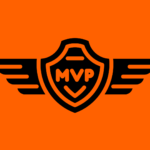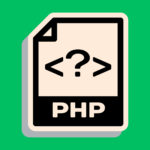Developing a successful product that resonates with customers is the goal of every startup and business. However, many fall into the trap of building features and products that don’t actually solve real customer problems. The key is to truly understand your target market, validate product ideas early and often, and continually refine the product based on real user feedback. Here are some best practices on how to achieve product/market fit and build features customers want:
Understand the Market, Customer, and Problem
The first step is researching and understanding the target market and customer. Gather insights by:
- Interviewing potential customers directly about their biggest problems and needs. Ask open-ended questions to uncover pain points.
- Looking at market trends, analyst reports, and statistics about the industry. Identify gaps, opportunities, and challenges.
- Studying competitors and alternatives. What solutions exist? Why do they fall short?
- Observing customers first-hand if possible to understand their behaviors and environment.
- Creating customer persona profiles based on demographic, psychographic, and behavioral data.
This upfront research should reveal the target customer’s underserved jobs, unmet needs, and desired outcomes. The goal is to deeply understand the problem to solve rather than making assumptions.
Define the Product Vision
Next, define an overarching product vision that solves the customer problem and delivers on the desired benefits. The vision should align to the market insights uncovered during research. Ask:
- What is the essential customer problem we are solving?
- Who is the target user and how will we make their life better?
- What are the key benefits users will get from this product?
- How will it fit into the existing ecosystem and workflow?
- Why are we uniquely positioned to deliver this over other solutions?
A well-defined vision serves as a North Star to guide all product decisions and avoid feature creep down the line.
Conceptualize Solutions
With the vision in mind, start conceptualizing potential solutions to meet customer needs.
- Map out the end-to-end user journey and key interactions with the product.
- Sketch wireframes, user flows, and prototypes to visualize how customers will use it.
- Outline MVP feature sets that could validate the product concept quickly.
- Brainstorm creative solutions and differentiate from competitors.
- Avoid getting stuck on technology and implementation details too early.
Focus on conceptualizing just enough to start testing key assumptions quickly rather than over-engineering upfront.
Validate with Customers Early and Often
Next, validate those concepts with real potential customers. Feedback at this stage is gold because you can still pivot easily. Ways to validate quickly include:
- Customer interviews: Get reactions to proposed solutions and gauge interest.
- Concept pitching: Explain the product and value proposition, gauging interest.
- Landing pages: Create a marketing landing page and drive traffic to gauge interest.
- Crowdfunding: Launch a Kickstarter campaign to validate and get funding.
- Prototyping: Create clickable prototypes to demonstrate UI/UX and get hands-on feedback.
- Explainer videos: Create product demo videos to explain the product and value.
- Surveys: Run quantitative surveys to segment customers and evaluate product/market fit.
The goal is to understand what resonates, what causes confusion, and what features are must-haves versus nice-to-haves. Iterate rapidly on concepts based on feedback.
Define MVP Feature Set
After validating the broader product concept, it’s time to define the MVP – minimum viable product. This is a version of the product with just enough features to attract early adopters and validate core product assumptions. Avoid feature creep and extensive engineering at this stage.
When defining an MVP’s features, focus on:
- Core essentials – What absolutely must be included to make the product usable and deliver primary value? These are the riskiest assumptions to test.
- Nice-to-haves – Lower priority features that enhance value but aren’t essential. Hold these for later.

- Customer requests – Features customers explicitly requested during validation. Indicates they value it.
- Low-hanging fruit – Quick wins that are easy to implement but provide value.
The MVP should be the simplest thing you can build to test the core product concept and hypothesis. It can even be a manual wizard-of-oz type test initially.
Launch and Iterate
Once the MVP is built, launch it to a small group of early adopters who can provide feedback. Monitor and measure how customers use the product. Look for signs they find value like engagement, retention, referrals. Interview users too.
Iterate rapidly by fixing bugs, adding essential features, and removing friction points. Fixate less on vanity metrics like number of users and more on learning. Pivot if needed based on the insights gathered.
Scale and Grow Intelligently
If the MVP validates the product shows positive traction, it’s time to scale. Prioritize additional features, marketing, and growth Initiatives based on:
- Customer feedback – What do users want most? What’s frustrating them?
- Key metrics – Where are users getting stuck? What causes drop-off?
- Market gaps – How can you expand your value proposition to acquire more customers?
Avoid feature creep by staying laser focused on the 20% of features that deliver 80% of the value. Say no to ideas that don’t align to core product priorities.
Continuing gathering feedback, monitoring usage, and iterating intelligently even after launch. Customer needs evolve so the product should too.
Conclusion
Achieving product/market fit takes continuous research, customer validation, MVP iteration, and disciplined prioritization. Companies often fail by solving imagined customer problems vs. real problems. Validate assumptions early, start with the minimum product, measure feedback systematically, and be flexible to pivot. This reduces wasted time and money while ensuring the product delivers the core value users want.





